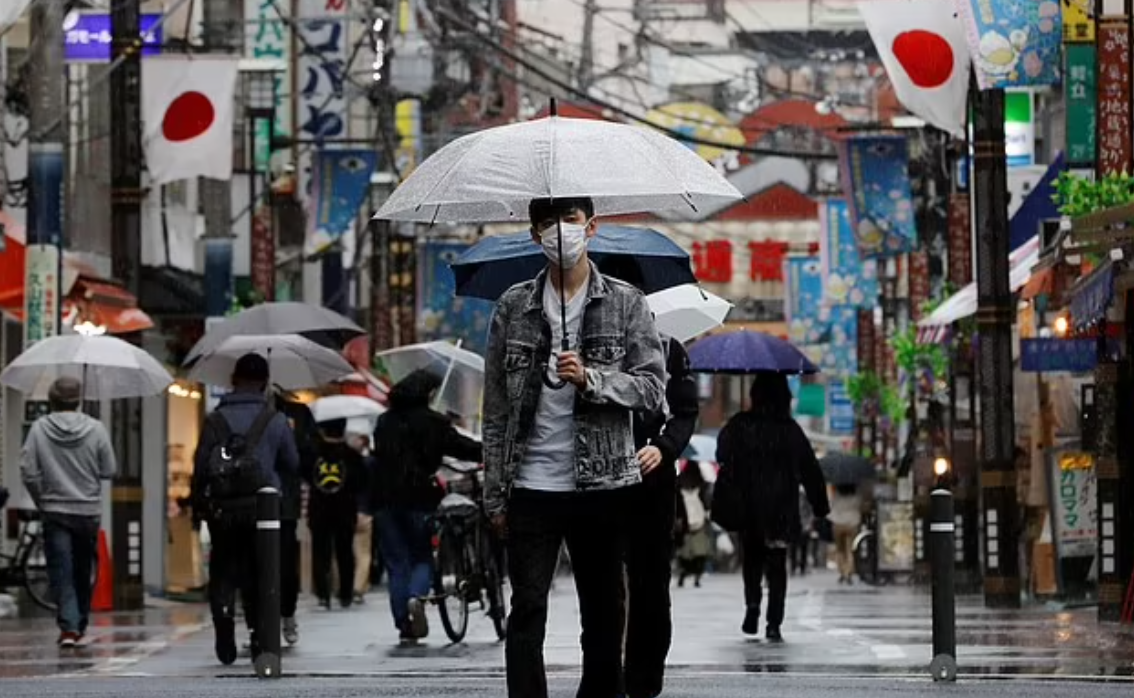
Japan has only just declared an end to pandemic restrictions, removing remaining border controls and ending mask restrictions. While many are still choosing to wear their masks outside, others fear they have been wearing the mask for so long that they’ve forgotten how to smile. Others worry that their smile now won’t come across as authentic, while others are simply anxious of showing the world the lower part of their face again. To help them beam again, many are turning to experts to rediscover their cheerful expressions.
“Smile trainer” Miho Kitano said: “I’ve heard from people who say that even if they’re able to remove their masks, they don’t want to show the bottom half of their faces, or that they don’t know how to smile anymore. Some say that they see more wrinkles around their eyes after using them more to smile, or they feel like their face is drooping (下垂) because they haven’t been using it as much as before.”
Kitano said her company Smile Facial Muscle Association has seen business skyrocket with people wanting to rediscover their pre-pandemic cheer. The “smile expert” gives her students exercises to help them with their smiles. Her pupils are given straws to bite down on with the aim that it elevates their cheek muscles to help show their teeth. “I meet many people who say they aren’t good at smiling, but it’s all about the muscles, and we have to use and train them in order to get good at it,” she said. “Just as you might exercise your arms, exercising your expressive muscles is so important.”
While many are trying to learn to smile again, showing one’s teeth has not always been seen as the done thing in Japan. “Culturally, smiling and doing so with teeth hasn’t always been appropriate in Japan, and you can speak Japanese without moving your mouth too much,” Keiko Kawano from the Smile Education Trainer Association said.
1.What does the underlined word “beam” mean?
A Relax.
B Strengthen.
C Free.
D Smile.
解析:选D。D词义猜测题。根据划线部分前文很多人忘记如何微笑以及划线部分后文“many are turning to experts to rediscover their cheerful expressions”许多人求助专家来重新找回他们的快乐表情可知,划线部分意思是为了帮助他们再次“微笑”。故选D。
2.What mainly made people forget how to smile according to Miho Kitano?
A Unsuitable masks.
B Worries about appearance.
C The use of masks.
D Non-ideal health condition.
解析:选B。B推理判断题。根据第二段最后一句的“they see more wrinkles around their eyes after using them more to smile, or they feel like their face is drooping”“they haven’t been using it as much as before”可知,在微笑之后,人们的眼睛周围出现更多的皱纹,或者人们觉得自己的脸下垂了。由此可推知,人们太久没有微笑进而忘记如何微笑,主要是担心微笑影响外貌。故选B。
3.What does Miho Kitano mean by saying “business skyrocket”?
A Many people pay to learn how to smile.
B Exercising expressive muscles is important.
C Lots of people aren’t good at smiling.
D Her business is very successful.
解析:选A。A推理判断题。根据第三段“people wanting to rediscover their pre-pandemic cheer”“gives her students exercises to help them with their smiles”可知她的业务量猛增,人们希望能找回疫情前的快乐,她给学生们做练习,帮助他们保持微笑。由此可推知,很多人花钱找她学习如何微笑。故选A。
4.What does the last paragraph mainly talk about?
A Cultural achievement.
B Cultural features.
C Cultural identity.
D Cultural search.
解析:选B。B段落大意题。根据最后一段Keiko Kawano说的话可知,从文化上来讲,在日本露出牙齿不是很合适,不管你是微笑还是说话。这属于文化特征。故选B。